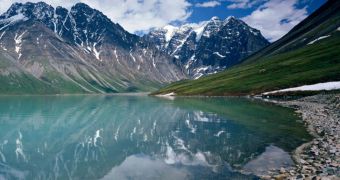According to a recent paper in the Journal of the American Water Resources Association, several of Alaska's protected regions are not as pristine as people imagine them to be.
On the contrary, a team of researchers led by National Park Service specialists claims to have documented traces of potentially harmful chemical compounds in fish in the state's Lake Clark National Park, Wrangell-St. Elias National Park, and Katmai National Park.
Alaska Dispatch informs that these regions all benefit from legal protection and are believed to be some of the most pristine in the state. Hence, having potentially dangerous compounds show up in fish inhabiting these areas might come as a surprise.
In their paper, specialists with the National Park Service detail that the compounds whose presence in Alaska's Lake Clark National Park, Wrangell-St. Elias National Park, and Katmai National Park might be a reason to worry are banned pesticides.
One of these compounds is PCB (polychlorinated biphenyl), i.e. a persistent organic pollutant whose production was outlawed by the United States Congress back in 1979 and by the Stockholm Convention on Persistent Organic Pollutants in 2001.
For the time being, specialists are unable to say how and why these banned pesticides ended up being present in the bodies of fish in Alaska's Lake Clark National Park, Wrangell-St. Elias National Park, and Katmai National Park.
They theorize that one likely cause of contamination is precipitation. Specifically, they suspect that atmospheric currents are the ones to have carried these compounds all the way to Alaska, and that rain took care of helping them reach natural ecosystems.
One other possibility is that fish species that travel in between fresh and saltwater sources are the ones to blame. More precisely, it could be that, while out in the ocean, fish such as salmon accumulate these compounds in their bodies and then carry them to their spawning sites.
Whatever the origin of these banned chemical compounds might be, researchers warn that, for the time being, there is not all that much that can be done to keep more of them from entering said protected areas. As study co-author Colleen Flanagan Pritz puts it, “That is beyond our control, at presently, anyway.”
What is interesting is that, according to Colleen Flanagan Pritz and her colleagues, fish in these three protected regions in Alaska were found to have higher concentrations of banned pesticides in their bodies than fish in Yosemite, Great Sand Dunes, Rocky Mountain, Lassen Volcanic and Sequoia and Kings Canyon.
The researchers theorize that this is because the Alaskan fish that they examined were bigger than the ones collected from the other protected regions that this investigation focused on. “These bigger fish accumulate more contaminants over time because they are older,” Colleen Flanagan Pritz explained.

 14 DAY TRIAL //
14 DAY TRIAL //